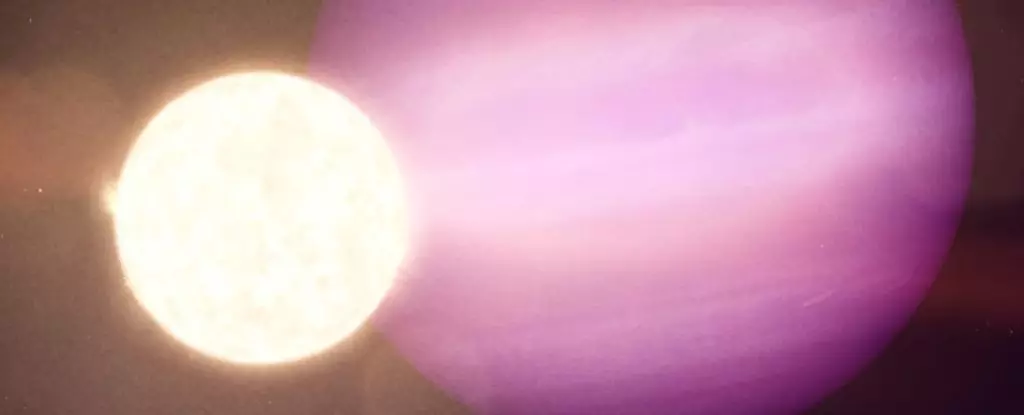In the vast expanse of the cosmos, where myriad stars twinkle silently, the discovery of exoplanets remains a frontier teeming with possibilities. Among the most intriguing recent findings is WD 1856+534 b, a gas giant orbiting a white dwarf star about 81 light-years away from Earth. This super-Jupiter, possessing a mass around six times that of our largest planet, Jupiter, stands out not only for its size but also for its cold temperature, making it the coldest known exoplanet to date. The significance of WD 1856+534 b reaches far beyond its dimensions; it offers students of the universe valuable insights into the nature of evolving planetary systems and the potential for life beyond our Solar System.
The Investigation and Methodology
Led by Mary Anne Limbach from the University of Michigan, an international research team utilized the advanced capabilities of the James Webb Space Telescope (JWST) to explore this exoplanet in unprecedented detail. The research, part of the JWST Cycle 3 General Observation program, aimed at directly imaging the planet by analyzing the light reflected from its surface. The Mid-Infrared Instrument (MIRI) played a crucial role in this investigation, helping to confirm that WD 1856+534 b is a unique candidate for studying the atmospheric and compositional traits of exoplanets.
The precision inherent in the JWST’s infrared capabilities allows astronomers to peer into the intricate dance of celestial bodies and their interactions. By employing the Infrared excess method, the team effectively constrained the mass and atmospheric characteristics of WD 1856+534 b, revealing a frigid average temperature of about 186 K (-87 °C). This capability could redefine our understanding of exoplanets, as direct imaging of light from such bodies typically faces immense challenges from the relentless brightness of their host stars.
White Dwarfs: The Cosmic Lab
The study of WD 1856+534 b is particularly compelling given its host star, a white dwarf. As remnants of stars that have exhausted their nuclear fuel, white dwarfs present a unique opportunity for astronomers. Their low luminosity significantly mitigates the contrast challenges posed when searching for exoplanets. Consequently, they create a favorable environment for studying planetary systems that may have evolved long after the parent star’s death.
This perspective opens avenues for exploring crucial questions about planet survivability post-main-sequence evolution. It provides a window into the future of our planetary system and how it may change once the Sun exhausts its fuel. Understanding whether planets can maintain stable orbits and possibly even support life around these stellar remnants is essential for assessing the long-term dynamics of planetary systems.
Challenging Traditional Views
The findings surrounding WD 1856+534 b challenge the conventional expectations about exoplanets in close orbits around white dwarfs. Surprisingly, the team’s observations confirm that this massive planet can endure within a close orbit, counteracting previous assumptions about the disintegration of planetary bodies in such environments. The implications of this research are profound, suggesting that habitability might still be a possibility in these evolving star systems.
Moreover, the investigation into WD 1856+534 b may foreshadow the arrival of new discoveries, particularly with the potential identification of additional planets within its vicinity. With future planned observations using JWST in 2025, researchers are enthusiastic about unlocking even more secrets about this mysterious planet and its environment.
The Future of Exoplanet Research
As we continue to probe the depths of our universe, the capabilities of next-generation telescopes like JWST usher in a golden age of astronomical discovery. The pursuit of understanding life’s potential across the cosmos is no longer confined to science fiction; it is within our reach. The direct observation of exoplanets like WD 1856+534 b paves the way for discovering biosignatures—chemical indicators of life.
Given the detailed spectroscopic analysis that JWST can conduct, future research endeavors could yield crucial information about planetary compositions, atmospheric conditions, and even their potential for supporting life. As our quest for knowledge unfolds, we stand on the brink of monumental revelations that could redefine our understanding of life beyond Earth, reminding us that in the quest for the unknown, the cosmos holds infinite possibilities.
In pursuing these inquiries, we embark on a journey that not only speaks to our scientific aspirations but reflects our inherent curiosity about the universe. Each discovery propels us forward, inviting us to dream of what lies beyond the cosmic horizon.

